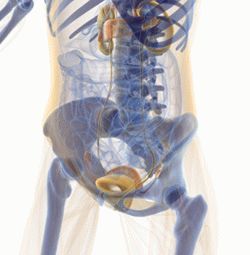Cystoscopy

Cystoscopy is a widely used procedure used to examine the patient''s bladder. It is carried out using a special optical device, called a cystoscope. The cystoscope consists of a long tube that is gradually introduced through the urethra into the patient's body until it reaches the bladder, which allows the physician to analyze the state of the urethra. Since this procedure is quite painful, especially for men because of the long urethra, a local anesthetic gel is frequently used to numb the area.
The cystoscope enables the physician to diagnose various diseases or pathologies of the urethra and bladder, to detect possible benign or malignant tumors in these organs, and to spot infections, possible defects of the organ, trauma, and foreign bodies. Cystoscopy is also frequently used for surgical interventions in various ailments of the genitourinary system.
Some kinds of surgeries, during which the device may be used, include operations on the bladder, prostate or urethra, treatment of ulcers and infections, removal of stones, biopsy, and lavage of the urethra, as well as treatments of other problems leading to enuresis. A cystoscope is a miniature device, so it is used mostly by minimally invasive procedures. Because this tool removes the need for abdominal surgery and the opening of the abdominal cavity, it reduces the likelihood of bleeding.
An important advantage of cystoscopy is that there is no need for hospitalization. This kind of surgical intervention usually requires the patient to remain in the hospital for a much shorter period of time than other procedures.
Unfortunately, cystoscopy cannot be recommended in all cases. Physical injuries and defects of the urethra, as well as some infections and inflammatory processes, require other methods of treatment. Also, if the patient has recently used anticoagulants, the use of this procedure may also be contraindicated. Before cystoscopy, the use of such drugs should be interrupted.
Hypospadias
Hypospadias is a congenital malformation of the genitourinary system observed in some men. In the case of hypospadias, the urethral opening is not located in the usual place - in the center of the glands of the penis, but a little away from the central zone. Sometimes there are cases when this opening can be covered with the foreskin (completely or partially) or the urethral opening is not located directly on the penis, but in the nearby area of the perineum (behind or in front of the scrotum).
Very often hypospadias are accompanied by other developmental defects of the genitourinary system, such as congenital curvature of the penis, external fusion of the reproductive system, narrowing in the urethra, abnormalities of the foreskin, both internal and external genitals, or other anomalies and physical defects.
It may seem that hypospadias is a rare developmental defect, but it actually occurs quite often—one or more per 200-300 male births, according to experts. Until recently, the exact factors that lead to such complicated defects, as hypospadias, have not been identified.
Specialists now suggest that these complications may result from abnormalities in the mother's body, influence of hormones, as well as negative external impact, during embryonic development. There may also be a hereditary predisposition to the disease, so genetics may also play a significant role.
Unfortunately, hypospadias is a serious disease, indicating a very serious problem that should be corrected. In particular, by newborn infants with such anomalies, it is sometimes not possible to determine their sex accurately. Some males may fall into a group known as "hypospadias without hypospadias”. In these cases, a shortened urethra leads to a distortion of the penis, rather than the urethral opening not being located at the proper place. In such a situation, a man is unable to enjoy a full sex life, because the shortened urethra cannot be stretched, and either causes painful erections, or makes them quite impossible.
Hypospadias sufferers quite often do not experience greater discomfort in normal life than other men. The most common issues are the inability to urinate normally, because the urethral opening is located in an unusual place.
Hypospadias can also be associated with impaired reproductive capacity, since an abnormal placement of the urethral opening may hinder the ejaculation and placing the sperm into a woman's body. In addition, there may be sexual difficulties due to unusual curvature of the penis. These defects of the male reproductive organs can lead to infertility or other problems.
These birth defects may also have a negative impact on the psychological state of a man. In order to avoid emotional problems and psychological disorders later, experts recommend starting treatment of this disease at an early age, literally from the first year of a baby’s life. In adolescent boys, structural features of the penis and urinating with hypospadias can result in an inadequate reaction of peers and cause serious psychological trauma to the child. Similar effects can occur in adulthood. In those cases, curvature of the penis in particular can cause impotence, which has both physical and psychological causes.
Currently, there are several types of operations to relieve hypospadias. After a consultation with a specialist, the patient will be offered the most appropriate type of surgery. Some of the factors taken into consideration include the degree and type of deformity, the location of the opening for the urethra, and whether it is necessary to extend and reconstruct the urethra. To reconstruct or elongate the urethra, the mucous membrane tissue from the bladder, appendix, circumcision or other areas of the body can be used.
In complex situations, surgical intervention may be carried out in several stages until the full restoration of the natural form and functions of the damaged organs or parts of the urogenital system is completed. Such operations can be conducted in a child in the first year and a half after the birth, but they are also suitable for patients of any age. Following the surgery, the patient is on bed rest with a urinary catheter for some period of time. In most cases, the rehabilitation process takes a maximum of 6-8 weeks. If any additional surgeries are needed, they are usually carried out after complete rehabilitation of the patient.



